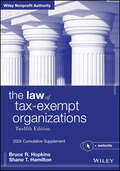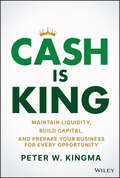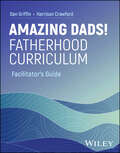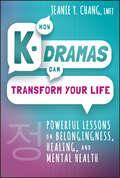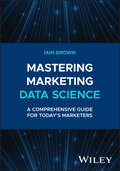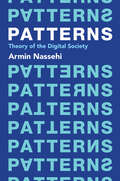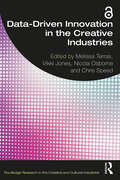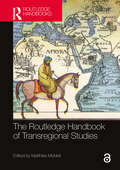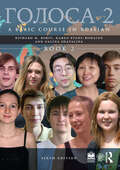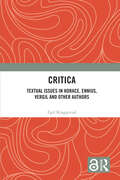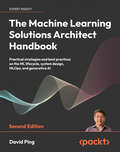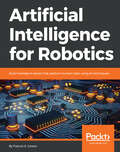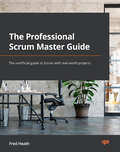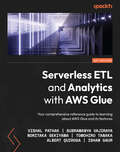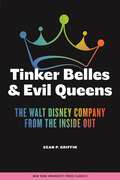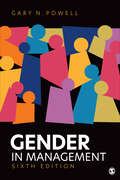- Table View
- List View
Rajat Gupta
by Eugene Soltes Paul M. HealyRajat Gupta, former managing director of McKinsey & Company, a director of Goldman Sachs, Proctor & Gamble, and AMR, and a well-known philanthropist, was convicted of engaging in insider trading. The case explores Gupta's rise and the later legal problems he faced.
The Law of Tax-Exempt Organizations: 2024 Cumulative Supplement
by Bruce R. Hopkins Shane T. HamiltonUnderstand the newest developments in the law and regulation of tax-exempt organizations In the 2024 Cumulative Supplement to The Law of Tax-Exempt Organizations, 12th Edition, a team of experienced and renowned attorneys delivers the latest developments in the ever-evolving tangle of laws and regulations impacting on the operation of tax-exempt entities in the United States. You’ll find discussions of the most recent Treasury Department regulations, Internal Revenue Service revenue rulings and revenue procedures, and federal court opinions (and the occasional state court opinion of particular importance) from 2023 and 2024. The authors explore new private letter rulings from the IRS, updating the public on their position on a wide array of issues with day-to-day applicability to tax exempt organizations. You’ll also find: Incisive and authoritative analysis of recent federal court decisions impacting the managers, officers, and directors of tax-exempt organizations The authors’ valuable insights into the efficacy and correctness of the various rulings, procedures, and opinions from government agencies issued since 2023 Careful consideration of the effect of the growing number of laws, regulations, and procedures impacting the management of tax-exempt entitiesPerfect for the managers, directors, and officers of tax-exempt organizations, the 2024 Cumulative Supplement to the 12th edition of The Law of Tax-Exempt Organizations will also prove invaluable to the lawyers, accountants, and other professionals who serve them.
Cash Is King: Maintain Liquidity, Build Capital, and Prepare Your Business for Every Opportunity
by Peter W. KingmaAn illuminating exploration of the importance of your company's cash position and the steps you can take to ensure organizational liquidity In Cash is King, working capital and cash strategist Peter W. Kingma delivers an insightful and practical discussion of why your company's cash position should be on an equal footing with sales, cost, and service, and how to make that happen. You'll learn why cash is the fuel in your corporate engine and discover the attributes of an organizational cash culture and how to adopt them within your own firm. While explaining some of the most important—and most misunderstood—corporate finance concepts, this book is not a finance textbook. Instead, it uses case study examples to offer concrete suggestions for improvements in your company that increase the availability of cash when you most need it. You'll also find: Discussions of the importance of sufficient liquidity for operational concerns, research and development, and capital improvements Explorations of the consequences of insufficient cash positions Examinations of the ripple effects of seemingly small decisions that affect cash supply An essential resource for managers, executives, and business leaders everywhere, Cash is King is an effective and hands-on exploration of cash as the lifeblood of any modern commercial entity and an incisive guide to ensuring that your company will have enough of it when its required.
Amazing Dads! Fatherhood Curriculum, Facilitator's Guide
by Dan Griffin Harrison CrawfordThe only trauma-informed curriculum designed to turn men into great dads Amazing Dads Fatherhood Curriculum teaches fathers with kids of all ages to become exceptional parents. These detailed lessons meet dads where they are, starting from the common tendencies of male socialization to help explain key concepts of healthy fathering. Through a trauma-informed approach, this curriculum creates safety in the group setting while delving into critical topics that fathers simply do not tend to talk about with people in their lives. Unlike other fatherhood curricula, Amazing Dads addresses a breadth of topics, empowering men to discuss issues like family of origin, sexuality, how punishment can turn into abuse, self-care, and how toxic messages in the culture can hinder parent-child relationships. Each session incorporates grounding and breathing exercises, in addition to activities, exercises, and experiential opportunities that allow participants to connect with the material on a meaningful level. By the end of this course, fathers will have gained the increased self-awareness needed to enhance their relationships with their children and other family members. Lead fathers through a curriculum of targeted lessons focused on how male socialization affects their parenting Guide participants through exercises for developing relational, communication, and conflict resolution skills Connect with dads on a meaningful level by creating a safe space for discussions of trauma and other difficult subjects Explain important parenting concepts using examples, hands-on activities, and more This curriculum is excellent for use in parenting groups, behavioral health treatment programs, addiction treatment programs, and other community-based programs serving fathers. Dads of all backgrounds, with kids of all ages, will benefit from the wisdom in Amazing Dads Fatherhood Curriculum.
How K-Dramas Can Transform Your Life: Powerful Lessons on Belongingness, Healing, and Mental Health
by Jeanie Y. ChangDiscover the power of how K-Dramas can improve your wellbeing and provide a sense of belonging Love K-Dramas and want more permission to binge watch them? In How K-Dramas Can Transform Your Life: Powerful Lessons on Belongingness, Healing, and Mental Health, Licensed Marriage and Family Therapist Jeanie Y. Chang explores what K-Dramas can teach us about our own well-being and how we can use the lessons they teach us to live better and more meaningful lives. She also touches upon the powerful interrelationship between K-dramas, mental health, and belongingness. Topics covered include: Using K-Dramas as a roadmap to life, showing you how to navigate speed bumps, roadblocks, twists, turns, and dead ends Building cross-cultural relationships that you otherwise may not have without being a K-Drama fan Processing grief from the loss of a loved one to a loss of anything—a job, your physical safety, a relationship, or something else Harnessing the idea of Jeong, which is innate in Korean society and refers to the emotional sentiment of affinity, affection, kinship, and connection which is the thread throughout Jeanie's community Working the author’s trademarked mental health framework, Cultural Confidence®, to build up your mental health, identity, mindfulness, and resilience For K-Drama fans and enthusiasts and anyone curious about the influence of pop culture, How K-Dramas Can Transform Your Life is an entertaining and educational must-read on how this enormously popular global phenomenon can help us become the best versions of ourselves.
Mastering Marketing Data Science: A Comprehensive Guide for Today's Marketers (Wiley and SAS Business Series)
by Iain BrownUnlock the Power of Data: Transform Your Marketing Strategies with Data Science In the digital age, understanding the symbiosis between marketing and data science is not just an advantage; it's a necessity. In Mastering Marketing Data Science: A Comprehensive Guide for Today's Marketers, Dr. Iain Brown, a leading expert in data science and marketing analytics, offers a comprehensive journey through the cutting-edge methodologies and applications that are defining the future of marketing. This book bridges the gap between theoretical data science concepts and their practical applications in marketing, providing readers with the tools and insights needed to elevate their strategies in a data-driven world. Whether you're a master's student, a marketing professional, or a data scientist keen on applying your skills in a marketing context, this guide will empower you with a deep understanding of marketing data science principles and the competence to apply these principles effectively. Comprehensive Coverage: From data collection to predictive analytics, NLP, and beyond, explore every facet of marketing data science. Practical Applications: Engage with real-world examples, hands-on exercises in both Python & SAS, and actionable insights to apply in your marketing campaigns. Expert Guidance: Benefit from Dr. Iain Brown's decade of experience as he shares cutting-edge techniques and ethical considerations in marketing data science. Future-Ready Skills: Learn about the latest advancements, including generative AI, to stay ahead in the rapidly evolving marketing landscape. Accessible Learning: Tailored for both beginners and seasoned professionals, this book ensures a smooth learning curve with a clear, engaging narrative. Mastering Marketing Data Science is designed as a comprehensive how-to guide, weaving together theory and practice to offer a dynamic, workbook-style learning experience. Dr. Brown's voice and expertise guide you through the complexities of marketing data science, making sophisticated concepts accessible and actionable.
Patterns: Theory of the Digital Society
by Armin NassehiWe are inclined to assume that digital technologies have suddenly revolutionized everything – including our relationships, our forms of work and leisure, and even our democracies – in just a few years. Armin Nassehi puts forward a new theory of digital society that turns this assumption on its head. Rather than treating digital technologies as an independent causal force that is transforming social life, he asks: what problem does digitalization solve? When we pose the question in this way, we can see, argues Nassehi, that digitalization helps societies to deal with and reduce complexity by using coded numbers to process information. We can also see that modern societies had a digital structure long before computer technologies were developed – already in the nineteenth century, for example, statistical pattern recognition technologies were being used in functionally differentiated societies in order to recognize, monitor and control forms of human behaviour. Digital technologies were so successful in such a short period of time and were able to penetrate so many areas of society so quickly precisely because of a pre-existing sensitivity that prepared modern societies for digital development. This highly original book lays the foundations for a theory of the digital society that will be of value to everyone interested in the growing presence of digital technologies in our lives.
Data-Driven Innovation in the Creative Industries (Routledge Research in the Creative and Cultural Industries)
by Melissa Terras Vikki Jones Nicola Osborne Chris SpeedThe creative industries – the place where art, business, and technology meet in economic activity – have been hugely affected by the relatively recent digitalisation (and often monetisation) of work, home, relationships, and leisure. Such trends were accelerated by the global COVID-19 pandemic. This edited collection examines how the creative industries can be supported to make best use of opportunities in digital technology and data-driven innovation.Since digital markets and platforms are now essential for revenue generation and audience engagement, there is a vital need for improved data and digital skills in the creative and cultural sectors. Taking a necessarily global perspective, this book explores the challenges and opportunities of data-driven approaches to creativity in different contexts across the arts, cultural, and heritage sectors. Chapters reach beyond the platforms and approaches provided by the technology sector to delve into the collaborative work that supports innovation around the interdisciplinary and cross-sectoral issues that emerge where data infrastructures and approaches meet creativity.A novel intervention that uniquely centres the role of data in the theory and practice of creative industries’ innovation, this book is valuable reading for those researching and studying the creative economy as well for those who drive investment for the creative industries in a digitalised society.The Open Access version of this book, available at www.taylorfrancis.com, has been made available under a Creative Commons Attribution-Non Commercial-No Derivatives (CC-BY-NC-ND) 4.0 International license.
The Routledge Handbook of Transregional Studies (Routledge History Handbooks)
by Matthias MiddellThe Routledge Handbook of Transregional Studies brings together the various fields within which transregional phenomena are scientifically observed and analysed. This handbook presents the theoretical and methodological potential of such studies for the advancement of the conceptualization of global and area-bound developments.Following three decades of intense debate about globalization and transnationalism, it has become clear that border-crossing connections and interactions between societies are highly important, yet not all extend beyond the borders of nation-states or are of truly world-wide reach. The product of extensive international and interdisciplinary cooperation, this handbook is divided into ten sections that introduce the wide variety of topics within transregional studies, including Colonialism and Post-Colonial Studies, Spatial Formats, International Organizations, Religions and Religious Movements, and Transregional Studies and Narratives of Globalization. Recognizing that transregional studies asks about the space-making and space-formatting character of connections as well as the empirical status of such connections under the global condition, the volume reaches beyond the typical confines of area and regional studies to consider how areas are transcended and transformed more widely.Combining case studies with both theoretical and methodological considerations, The Routledge Handbook of Transregional Studies provides the first overview of the currently flourishing field of transregional studies and is the ideal volume for students and scholars of this diverse subject and its related fields.
Ardian: Portfolio Company Governance
by Emer Moloney Lynn Sharp Paine Tonia LabruyereLeaders of the mid cap buyout group at Ardian, the Paris-based private equity firm led by Dominique Senequier, have been asked to review and assess the governance model the firm uses for majority-owned companies in its portfolio. The case describes the governance model and then shows how it has worked in practice at two companies: Italy's orthopedic implant maker Lima Corporate and French chemical company Novacap. For each company, the case describes how Ardian decided on the investment and established a board of directors, and details the deliberations around some of the critical decisions made by each board during Ardian's tenure as majority shareholder. Through the two examples of Lima and Novacap, the case invites students to evaluate Ardian's approach to corporate governance in its portfolio companies and to recommend possible changes or improvements.
Golosa: A Basic Course in Russian, Book Two
by Richard M. Robin Karen Evans-Romaine Galina ShatalinaГОЛОСА: A Basic Course in Russian, Book Two (Sixth Edition), takes a contemporary approach to language learning by focusing on the development of functional competence as well as the expansion of cultural knowledge.The sixth edition of this bestselling communicatively based text for Russian has been updated by putting a greater focus on contemporary culture and simplified, visual grammar explanations that will better engage students. The program also covers the basic morphology of Russian (declension, case government, conjugation). The program has been a bestseller as a college Russian textbook through five editions since 1993.Following on from Golosa Book One, Golosa Book Two is divided into ten units. Organised thematically, each unit contains dialogs, texts, exercises, and other material designed to enable students to read, speak, and write about the topic, as well as to understand simple conversations. The systematic grammar explanations and exercises enable students to develop a conceptual understanding and partial control of all basic Russian structures. This strong structural base enables students to accomplish the linguistic tasks and prepares them for further study of the language. Book Two is designed to bring students to the ACTFL Intermediate range in speaking (A2/B1 on the CEFR scale).Print and eTextbooks are accompanied by a Student Workbook and a rich companion website (www.routledge.com/cw/golosa) offering audio and video material, instructor resources and fully integrated exercises to use alongside the text. The companion website, powered by Lingco, is available for separate purchase from Lingco. Teachers can preview the new companion websites and create their courses. Free audio and video resources are also available at www.routledge.com/cw/golosa, including the Instructor Resources. For resources on how to set up and customize your course, please visit the Help Center on the Lingco Language Labs website at www.lingco.io. It includes articles that explain how the platform works and what you can do with it. Students may join their teacher’s course on Lingco and will be able to enter their access code or purchase access at any point in the 14-day grace period that begins on the first date of access. Students receive 12 months of access that begins after a free 14-day grace period.
Spotting Institutional Voids in Emerging Markets
by Krishna G. Palepu Tarun KhannaWith the demise of communism, many countries in the world are striving to build their economic activity around markets and to participate in free trade arrangements, such as the World Trade Organization (WTO), European Union (EU), and North American Free Trade Agreement (NAFTA). Addresses several issues critical to understanding the unique nature of emerging markets relative to their more mature counterparts. What is the fundamental challenge in building well-functioning markets? On which sets of institutions do advanced markets rely to resolve these challenges? What makes building these institutions complex? What happens when some of these institutions are either absent or underdeveloped in an economy? How does one spot these institutional voids?
Snap Inc. Goes Public (A)
by Lynn Sharp Paine Will HurwitzSnap Inc.'s chairman must decide how to address investor concerns about the company's unprecedented plans to issue only non-voting shares in its upcoming IPO. The case is set in early 2017 following the public availability of Snap's IPO filing with the U.S. Securities and Exchange Commission (SEC). It describes the company's meteoric rise from its conception by its young founders in 2011 to its multi-billion dollar valuation. When Snap filed for its long-anticipated IPO that could value it at more than $20 billion, it described its plans to go public with three share classes providing public investors shares with no votes on matters customarily put to a shareholder vote and allowing its two co-founders control over such matters. The case details the checkered history of multiple share class structures, highlights arguments for and against them, and explores the potential implications for index funds. Investors managing over $3 trillion sent a letter to Snap Chairman Michael Lynton and Co-Founders Evan Spiegel and Robert Murphy asking them to reconsider the share structure just one day after the company's S-1 was made public. As controversy mounted and with the IPO possibly just a month away, Lynton must decide how to respond to the investors' letter.
Critica: Textual Issues in Horace, Ennius, Vergil and Other Authors
by Egil KraggerudGathering together over 60 new and revised discussions of textual issues, this volume represents notorious problems in well-known texts from the classical era by authors including Horace, Ennius, and Vergil.A follow-up to Vegiliana: Critical Studies on the Texts of Publius Vergilius Maro (2017), the volume includes major contributions to the discussion of Horace’s Carmen IV 8 and IV 12, along with studies on Catullus Carmen 67 and Hadrian’s Animula vagula, as well as a new contribution on Livy’s text at IV 20 in connection with Cossus’s spolia opima, and on Vergil’s Aeneid 3. 147–152 and 11. 151–153. On Ennius, the author presents several new ideas on Ann. 42 Sk. and 220–22l, and in editing Horace, he suggests new principles for the critical apparatus and tries to find a balance by weighing both sides in several studies, comparing a conservative and a radical approach.Critica will be an important resource for students and scholars of Latin language and literature.The Open Access version of this book, available at http://www.taylorfrancis.com, has been made available under a Creative Commons Attribution-Non Commercial-No Derivatives (CC-BY-NC-ND) 4.0 license.
Wendell Weeks at Corning Inc.: Extending a History of Life-Changing Innovations
by Aldo Sesia David G. Fubini Ryan L. RaffaelliThis case examines the leadership challenges associated with maintaining a culture of innovation in established organizations. It asks students to step into the shoes of a leader faced with making several tough decisions about when to invest (or to stop investing) in radical innovation projects. Corning CEO Wendell Weeks, who nearly bankrupted the company in the early 2000s when he overinvested in fiber optics, must initially decide if the company should enter a then-risky deal with Steve Jobs to produce the glass covers for the first generation iPhones. The case then asks students to analyze the Corning's 157-year innovation agenda that started with the development of a bulb-shaped glass encasement for Thomas Edison's new incandescent lamp. In the years that followed, Corning made investments that led to products such as PYREX cookware, fiber-optic broadband cable, LCD television screens, Gorilla Glass, and a recent bet on pharmaceuticals. At the end of the case, Weeks must decide if Corning should continue to invest in a new pharmaceutical packaging product that held enormous promise, but had already cost the company $200 million in R&D and might divert resources and attention from other key business lines.
M-KOPA: Empowering Lives
by Pippa Tubman Armerding V. Kasturi Rangan Wale LawalThe Pay As You Go solar power company in East Africa had sales of $71 million in 2019. It wished to grow to $300 million by 2025. M-KOPA, founded by three entrepreneurs in 2011, had grown nicely in Kenya and Uganda to reach nearly 750,000 households with an innovative direct sales force model. Jesse Moore, the founder, wished to scale the company through organic growth as well as geographical expansion into Nigeria. The strategy called for decisions on product/service offerings and go-to-market options. On the product side the company had increasingly migrated to larger in-home connected electronic and electrical devices. It had to decide how much further to go. On the go-to-market side its innovative Direct Service Representative network was hard to create and manage, and it had to think if there were viable alternatives.
Aleph Farms: A New Culture of Meat
by Elie Ofek Jeff HuizingaAleph Farms, an Israeli food-tech start-up, was hoping to play a major role in disrupting the conventional meat sector. Compared to intensive agricultural practices, Aleph's cultured (or lab-grown) meat solution held the promise of considerably reducing greenhouse gas emissions, as well as the use of land and water, while providing a new source of food for a rapidly growing world population. With much of the science already worked out, the company was now facing a host of challenges as it planned to launch its first product-a cultured steak. In particular, Aleph's CEO, Didier Toubia, and his management team had to figure out the best way to position and bring to market its innovative steaks, with a debut expected in late 2022 in Singapore. Management fully recognized potential barriers to consumer adoption and strived to build a relevant brand image. On the production side, the company knew it had to scale quickly and continue to bring down costs so that its steaks approached price parity with conventional meat. Yet given the intensive capital expenditures involved, this was no simple feat. Planning for the longer term, the company was beginning to consider its next product line.
The Machine Learning Solutions Architect Handbook: Practical strategies and best practices on the ML lifecycle, system design, MLOps, and generative AI
by David PingDesign, build, and secure scalable machine learning (ML) systems to solve real-world business problems with Python and AWS Purchase of the print or Kindle book includes a free PDF eBookKey FeaturesGo in-depth into the ML lifecycle, from ideation and data management to deployment and scalingApply risk management techniques in the ML lifecycle and design architectural patterns for various ML platforms and solutionsUnderstand the generative AI lifecycle, its core technologies, and implementation risksBook DescriptionDavid Ping, Head of GenAI and ML Solution Architecture for global industries at AWS, provides expert insights and practical examples to help you become a proficient ML solutions architect, linking technical architecture to business-related skills. You'll learn about ML algorithms, cloud infrastructure, system design, MLOps , and how to apply ML to solve real-world business problems. David explains the generative AI project lifecycle and examines Retrieval Augmented Generation (RAG), an effective architecture pattern for generative AI applications. You’ll also learn about open-source technologies, such as Kubernetes/Kubeflow, for building a data science environment and ML pipelines before building an enterprise ML architecture using AWS. As well as ML risk management and the different stages of AI/ML adoption, the biggest new addition to the handbook is the deep exploration of generative AI. By the end of this book , you’ll have gained a comprehensive understanding of AI/ML across all key aspects, including business use cases, data science, real-world solution architecture, risk management, and governance. You’ll possess the skills to design and construct ML solutions that effectively cater to common use cases and follow established ML architecture patterns, enabling you to excel as a true professional in the field.What you will learnApply ML methodologies to solve business problems across industriesDesign a practical enterprise ML platform architectureGain an understanding of AI risk management frameworks and techniquesBuild an end-to-end data management architecture using AWSTrain large-scale ML models and optimize model inference latencyCreate a business application using artificial intelligence services and custom modelsDive into generative AI with use cases, architecture patterns, and RAGWho this book is forThis book is for solutions architects working on ML projects, ML engineers transitioning to ML solution architect roles, and MLOps engineers. Additionally, data scientists and analysts who want to enhance their practical knowledge of ML systems engineering, as well as AI/ML product managers and risk officers who want to gain an understanding of ML solutions and AI risk management, will also find this book useful. A basic knowledge of Python, AWS, linear algebra, probability, and cloud infrastructure is required before you get started with this handbook.
Artificial Intelligence for Robotics: Build intelligent robots that perform human tasks using AI techniques
by Francis X. GoversBring a new degree of interconnectivity to your world by building your own intelligent robots Key Features Leverage fundamentals of AI and robotics Work through use cases to implement various machine learning algorithms Explore Natural Language Processing (NLP) concepts for efficient decision making in robots Book Description Artificial Intelligence for Robotics starts with an introduction to Robot Operating Systems (ROS), Python, robotic fundamentals, and the software and tools that are required to start out with robotics. You will learn robotics concepts that will be useful for making decisions, along with basic navigation skills. As you make your way through the chapters, you will learn about object recognition and genetic algorithms, which will teach your robot to identify and pick up an irregular object. With plenty of use cases throughout, you will explore natural language processing (NLP) and machine learning techniques to further enhance your robot. In the concluding chapters, you will learn about path planning and goal-oriented programming, which will help your robot prioritize tasks. By the end of this book, you will have learned to give your robot an artificial personality using simulated intelligence. What you will learn Get started with robotics and artificial intelligence Apply simulation techniques to give your robot an artificial personality Understand object recognition using neural networks and supervised learning techniques Pick up objects using genetic algorithms for manipulation Teach your robot to listen using NLP via an expert system Use machine learning and computer vision to teach your robot how to avoid obstacles Understand path planning, decision trees, and search algorithms in order to enhance your robot Who this book is for If you have basic knowledge about robotics and want to build or enhance your existing robot's intelligence, then Artificial Intelligence for Robotics is for you. This book is also for enthusiasts who want to gain knowledge of AI and robotics.
The Professional Scrum Master (PSM I) Guide: Successfully practice Scrum with real-world projects and achieve your PSM I certification with confidence
by Fred HeathGo from absolute beginner to passing your PSM I exam first time with this comprehensive guide. Packed with practical examples, this book is updated for the latest Scrum guidelines to turn you into a Scrum Master!Key FeaturesGo from absolute beginner to exam-ready with detailed explorations of Scrum use-casesUnderstand the different applications of agile concepts, and how to best apply them to your businessDiscover expert tips and work with real-world examples to pass the PSM I certification exam first timeBook DescriptionEver wondered why you'd use Scrum over other process frameworks? Or what makes Agile just so agile? Or why you should bother with the PSM certification? This book has you covered.The Professional Scrum Master (PSM I) Guide is a comprehensive tutorial that will not only introduce you to the basics of Scrum, but build you up to be ready to pass your PSM I exam first time round. Where other books avoid detail, this guide provides you with detailed practical examples to take you from being an apprentice to becoming a master.Assuming you're a total beginner, this book will introduce you to Scrum methodologies with detailed use cases, teaching you the secrets of Scrum in such a way that you'll be well-equipped for the PSM I exam.This book demonstrates the real-world applications of Scrum in a variety of scenarios, all with practical examples.You'll understand why the structure of your Scrum team matters, what you can achieve with properly planned sprints, and how to create and manage sprint and product backlogs. The chapters are regularly concluded with quizzes relevant to the exam, reinforcing the values you learn on your journey. Finally, it concludes with some exam preparation and myth-dispelling to make sure you have an edge when it comes to earning your certificate. This is a guide that'll ensure you won't fall behind in an ever increasingly agile world.What you will learnGet to grips with Agile development and Scrum from the ground upUnderstand the roles and responsibilities within the Scrum teamDiscover how to conduct Scrum events and create Scrum artifactsExplore real-world scenarios and use cases for Scrum in actionDevelop an in-depth understanding of how to run a successful sprint to deliver results quicklyBe fully prepared and able to pass your PSM I exam first timeWho this book is forAssuming no prior knowledge of Scrum, this book is for professionals who want to build a strong foundation in Scrum practices with the intention of passing the PSM I exam. If you're a product owner or project manager looking to stay relevant in an agile world, this book is essential to helping you become a Scrum Master.
Serverless ETL and Analytics with AWS Glue: Your comprehensive reference guide to learning about AWS Glue and its features
by Vishal Pathak Subramanya Vajiraya Noritaka Sekiyama Tomohiro Tanaka Albert QuirogaBuild efficient data lakes that can scale to virtually unlimited size using AWS GlueKey FeaturesLearn to work with AWS Glue to overcome typical implementation challenges in data lakesCreate and manage serverless ETL pipelines that can scale to manage big dataWritten by AWS Glue community members, this practical guide shows you how to implement AWS Glue in no timeBook DescriptionOrganizations these days have gravitated toward services such as AWS Glue that undertake undifferentiated heavy lifting and provide serverless Spark, enabling you to create and manage data lakes in a serverless fashion. This guide shows you how AWS Glue can be used to solve real-world problems along with helping you learn about data processing, data integration, and building data lakes.Beginning with AWS Glue basics, this book teaches you how to perform various aspects of data analysis such as ad hoc queries, data visualization, and real-time analysis using this service. It also provides a walk-through of CI/CD for AWS Glue and how to shift left on quality using automated regression tests. You'll find out how data security aspects such as access control, encryption, auditing, and networking are implemented, as well as getting to grips with useful techniques such as picking the right file format, compression, partitioning, and bucketing. As you advance, you'll discover AWS Glue features such as crawlers, Lake Formation, governed tables, lineage, DataBrew, Glue Studio, and custom connectors. The concluding chapters help you to understand various performance tuning, troubleshooting, and monitoring options.By the end of this AWS book, you'll be able to create, manage, troubleshoot, and deploy ETL pipelines using AWS Glue.What you will learnApply various AWS Glue features to manage and create data lakesUse Glue DataBrew and Glue Studio for data preparationOptimize data layout in cloud storage to accelerate analytics workloadsManage metadata including database, table, and schema definitionsSecure your data during access control, encryption, auditing, and networkingMonitor AWS Glue jobs to detect delays and loss of dataIntegrate Spark ML and SageMaker with AWS Glue to create machine learning modelsWho this book is forThis book is for ETL developers, data engineers, and data analysts who want to understand how AWS Glue can help you solve your business problems. Basic knowledge of AWS data services is assumed.
Policing Hatred: Law Enforcement, Civil Rights, and Hate Crime (Critical America #15)
by Jeannine BellExplores the intersection of race and law enforcement in the controversial area of hate crimeHigh-profile hate crimes like the torture-murder of Matthew Shepard and the dragging death of James Byrd have drawn the nation’s attention, but there are thousands of other individuals who are attacked because of their race, religion, or sexual orientation each year. This study of hate crimes challenges common assumptions regarding perpetrators and victims: most of the accused tend to be white, while most of their victims are not.Policing Hatred is an in-depth ethnographic study of how hate crime law works in practice, from the perspective of those enforcing it. It examines the ways in which the police handle bias crimes, and the social impact of those efforts. Bell exposes the power that law enforcement personnel have to influence the social environment by showing how they determine whether an incident will be charged as a bias crime.Drawing on her unprecedented access to a police hate crime unit, Bell’s work brings to life the stories of female, Black, Latino, and Asian American detectives, in addition to those of their white male counterparts. Policing Hatred also explores the impact of victim’s identity on each officers handling of bias crimes and addresses how the police treat defendants’ First Amendment rights. Bell’s vivid evidence from the field argues persuasively for the need to have the police diligently address even low-level offenses, such as vandalism, given their devastating cumulative effects on society.
Tinker Belles and Evil Queens: The Walt Disney Company from the Inside Out
by Sean P. GriffinThe first book to address the interaction between the Walt Disney Company and the gay communityFrom its Magic Kingdom theme parks to its udderless cows, the Walt Disney Company has successfully maintained itself as the brand name of conservative American family values. But the Walt Disney Company has also had a long and complex relationship to the gay and lesbian community that is only now becoming visible. In Tinker Belles and Evil Queens, Sean Griffin traces the evolution of this interaction between the company and gay communities, from the 1930s use of Mickey Mouse as a code phrase for gay to the 1990s "Gay Nights" at the Magic Kingdom. Armed with first-person accounts from Disney audiences, Griffin demonstrates how Disney animation, live-action films, television series, theme parks, and merchandise provide varied motifs and characteristics that readily lend themselves to use by gay culture. But Griffin delves further to explore the role of gays and lesbians within the company, through an examination of the background of early studio personnel, an account of sexual activism within the firm, and the story of the company's own concrete efforts to give recognition to gay voices and desires. The first book to address the history of the gay community and Disney, Tinker Belles and Evil Queens broadly examines the ambiguous legacy of how modern consumerism and advertising have affected the ways lesbians and gay men have expressed their sexuality. Disney itself is shown as sensitive to gay and lesbian audiences, while exploiting those same audiences as a niche market with strong buying power. Finally, Griffin demonstrates how queer audiences have co-opted Disney products for themselves-and in turn how Disney's corporate strategies have influenced our very definitions of sexuality.
Gender in Management
by Gary N. PowellIn the Sixth Edition of Gender in Management, author Gary N. Powell provides a comprehensive survey and review of the literature on sex, gender, and organizations. With the title change from Women and Men in Management to Gender in Management, the new edition adopts a more inclusive lens that acknowledges the diverse identities and experiences within the gender spectrum. Fully updated sections on intersectionality, public events such as COVID-19 and the Black Lives Matter movement, and the prevalence of AI in hiring decisions provide context to the evolving nature of gender in the workplace and society. Powell provides specific research-based strategies for promoting an organizational culture of nondiscrimination, diversity, and inclusion.
Gender in Management
by Gary N. PowellIn the Sixth Edition of Gender in Management, author Gary N. Powell provides a comprehensive survey and review of the literature on sex, gender, and organizations. With the title change from Women and Men in Management to Gender in Management, the new edition adopts a more inclusive lens that acknowledges the diverse identities and experiences within the gender spectrum. Fully updated sections on intersectionality, public events such as COVID-19 and the Black Lives Matter movement, and the prevalence of AI in hiring decisions provide context to the evolving nature of gender in the workplace and society. Powell provides specific research-based strategies for promoting an organizational culture of nondiscrimination, diversity, and inclusion.

